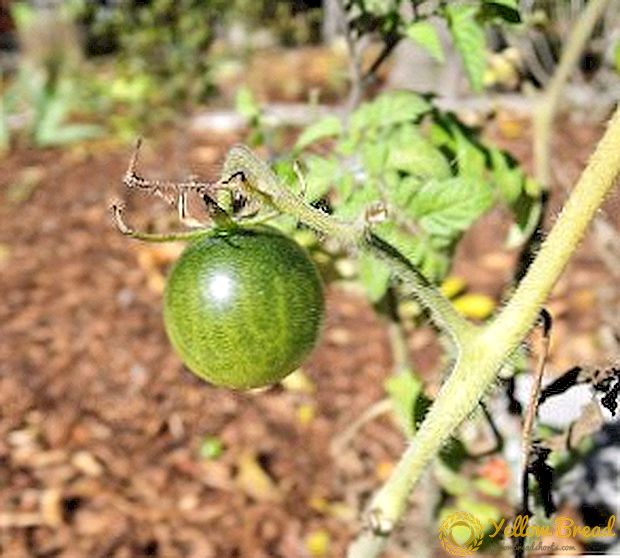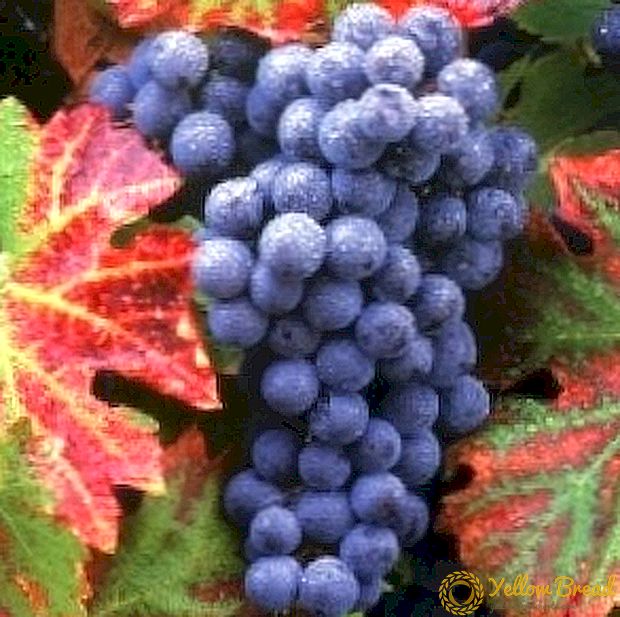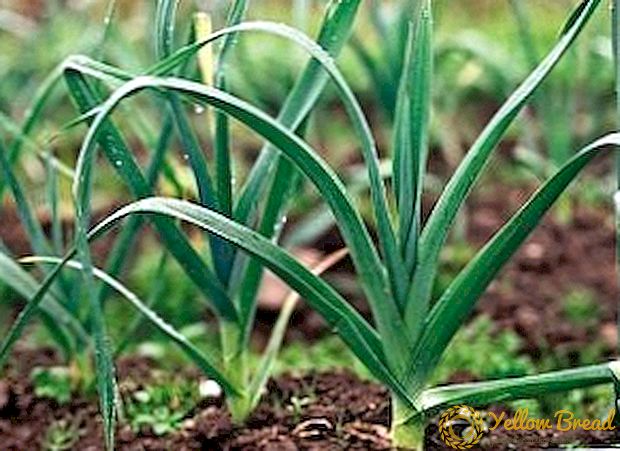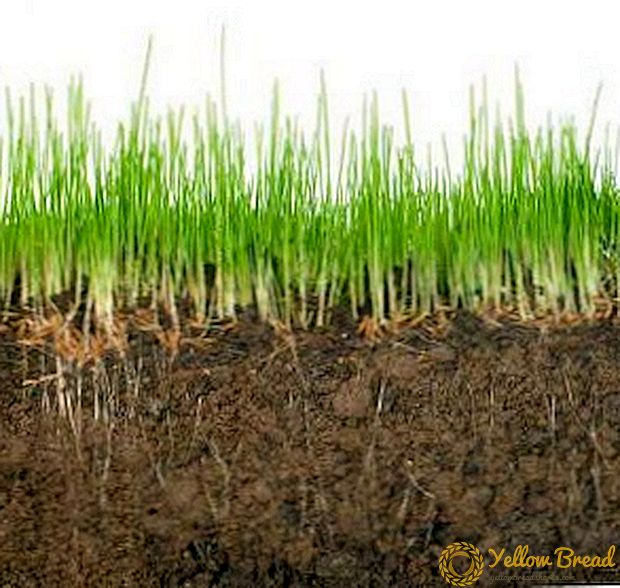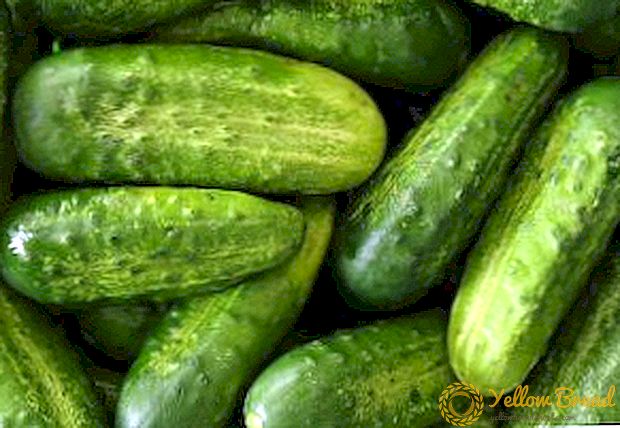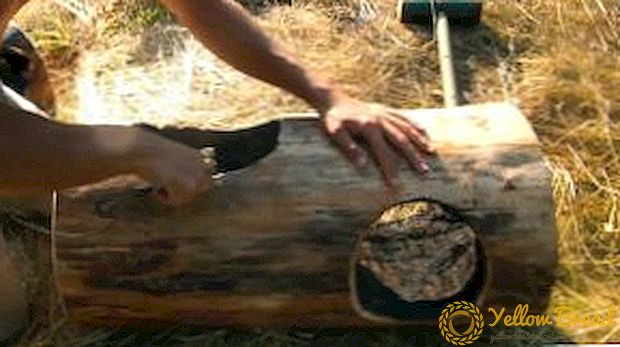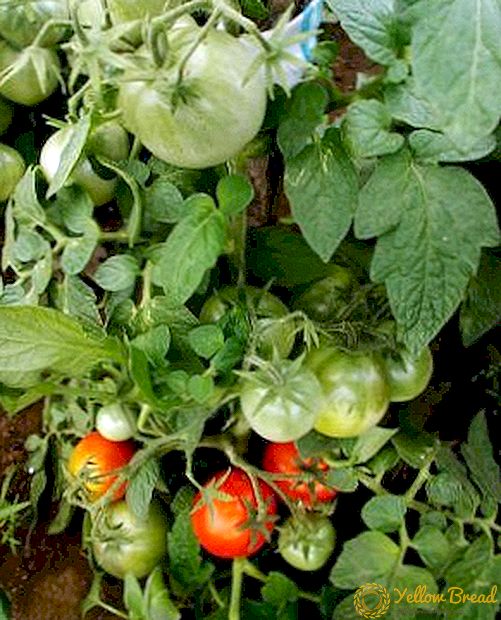 The characteristics and description of the Klusha (Super Klusha) tomato variety will not leave indifferent any amateur vegetable grower.
The characteristics and description of the Klusha (Super Klusha) tomato variety will not leave indifferent any amateur vegetable grower.
This crop produces an unimaginable amount of fruit for its small size.
Many farmers love these tomatoes also for their early ripeness and unpretentiousness in the care. In our article we will consider this variety in more detail.
- Biological description
- Fruit
- Bushes
- Characteristics of a variety
- Where to plant tomatoes
- Choosing a landing site
- Soil for "Klushi"
- Growing seedlings
- Selection and preparation of seeds
- Sowing and caring for seedlings
- Landing a permanent place and care
- Watering
- Weeding and soil care
- Top dressing
- Harvesting
- The advantages and disadvantages of the variety
Biological description
Domestic breeders called this variety of tomatoes - "Klusha", not just like that, just read their description: these are low-growing tomatoes, growing very tightly to each other and outwardly a little resembling a hen hen.
This variety belongs to the determinant type, since the height of its bush is not more than 60 cm. The standard bushes bring a high yield, even if no staking is carried out. The pink variety of these tomatoes is called “Super Klusha” and has some differences. 
Fruit
The fruits of this variety are small, weighing about 100 g, but they grow very thickly, so that there is always a big harvest on the bushes. Rounded fruits (without ribbing) have an average density and a good tomato flavor with a slight sourness. Fruits are used as fresh in food, and for preservation.
Even a small number of plants in a small garden can provide the whole family with fresh vegetables. One bush on the right bed gives up to 2.5 kg of tomatoes. 
Bushes
On the bushes of the plant leaves of a dark green shade, the shape is ordinary. Simple inflorescences usually form 8 flowers, almost 95% of them give an ovary. The bush is so compact that many growers grow this variety on the balcony.
The greatest yield from tomato "Klusha" can be obtained if you grow bushes with two to four stems.Since the plant is small, compact and has a powerful stem, it can be not tied up. But at the same time, so that a large number of fruits do not tend the stems to the ground, it is recommended to install thin supports for the bushes.
A variety of varieties "Super Klusha" differs by a small growth of 30-40 cm, pink fruits and powerful foliage. Plants of this variety practically do not get sick and can be grown both in the greenhouse and in the open ground.

Characteristics of a variety
- Title: "Broody".
- Type of: determinant.
- By maturity: early, about 100 days.
- Plant height: up to 50-60 cm
- Fruit: roundish, up to 100 g, red.
- Intended for use: fresh and for canning.
- Landing: in open ground and in the greenhouse.
- Productivity: 1.8-2.2 kg per bush, about 10.0-11.5 kg per square meter. m
- Marketable condition: Good, perfectly tolerate transportation and short storage.
- Seed producer: agrofirm "Siberian garden".
- Originator varieties: Dederko V.N., Postnikova T.N.
Where to plant tomatoes
To get a crop, you need to go through several stages: prepare the soil, select seeds, plant, care for the plant after sprouting seedlings, plant in a permanent place, care for the bushes.
Choosing a landing site
Vegetables need to be planted in a designated area. Even in the garden it should be a separate site. Growing in a greenhouse implies good lighting and ventilation; one should also not forget about flexible temperature control. Vegetable growers who do not have many opportunities are limited to building a glass greenhouse, even in this case the tomatoes growing in it do not experience much discomfort.
At the site of landing "Klushi" should provide adequate drainage.Often with abundant watering of bushes, water is retained in the soil and affects the growth of plants, which can lead to their disease.
Soil for "Klushi"
If a beginner grower takes the soil for the Klusha tomato from his plot, he needs to carry out land decontamination. To do this, take an aqueous solution of potassium permanganate. To make a solution of potassium permanganate, you need to dissolve 1 g of the substance in 2 liters of ordinary water. This solution must be treated soil.
Planting tomatoes on the place where legumes, parsley, carrots, and zucchini grew before can give good results. 
Growing seedlings
Growing seedlings is not just putting seeds into the soil. This procedure should be treated with full responsibility, since it depends on it, what will grow your future bushes.
Selection and preparation of seeds
Seeds for planting can be selected in this way. In the pre-prepared salt solution (at the rate of 20 g of salt in a glass of water) you need to pour the seeds. If the seeds float up, they can be thrown away, and those that sink to the bottom should be washed, dried and sown.
Before planting, the seeds should be treated with a solution of potassium permanganate or the drug "Wirtan-Micro". For the seeds to germinate - put them after processing in wet gauze.It is important not to allow gauze to dry out, however, it should not be too wet.
Sowing and caring for seedlings
For seedlings, a plastic container in which a hole will be made for drainage is an excellent option. You need to plant in channels with a depth of a little more than 1 cm. After that, you need to sprinkle the seeds with earth on top to bring the planting depth to 2 cm.  After planting, the soil should be compacted and watered with warm water. Then you should close the box with film or glass, place it in a warm place with good lighting, and after the shoots appear, the cover should be removed.
After planting, the soil should be compacted and watered with warm water. Then you should close the box with film or glass, place it in a warm place with good lighting, and after the shoots appear, the cover should be removed.
Landing a permanent place and care
Planted on a place of constant growth plants need to tight, about 6-7 bushes per 1 square. m. Prepare the ground for some time before planting tomatoes in it. Add to the soil humus, sawdust, rotted for at least a year, and ash. You need to dig up the ground to the depth of the spade bayonet and prepare the holes.
Watering
Watering a tomato is recommended with warm water, as the soil dries out, right under the tomato bush.Watering is carried out in the evening or early in the morning to avoid loss of moisture and burns of leaves in the afternoon. Do not spray water on the leaves, as this can cause a fungal disease on your vegetables. 
Weeding and soil care
For better growth, the soil around the bushes should be regularly loosened. This is very important to do after watering, or after rain. The roots in this situation will breathe much easier, and they will grow faster. Weeding is also a very important occupation when growing this variety. Since the bushes are low, regular removal of weeds will allow them to get more light.
As mentioned above, the stepson bushes are not necessary.
Top dressing
Plant nutrition can affect the formation of fruits. A few weeks after transplanting, bushes are recommended to be watered with nitroammophoska. The concentration of the solution should be 40 g per bucket of water. During the growing and growing season, tomatoes should be fertilized twice with mineral fertilizer.
Harvesting
When harvesting tomatoes need to consider certain nuances. Fruits collect immediately after they turn pink or red. Rip off tomatoes without fruit stems and then fold them neatly into special boxes. Store tomatoes need, wrapped in a sheet of soft paper and put in a box. Layers of tomatoes should be separated with hay or sawdust. Thanks to this method of packaging the fruit will be protected during transportation and storage.
The advantages and disadvantages of the variety
The tomato variety "Klusha" has its pros and cons, which you can see below.
Advantages:
- small bush, compact;
- high yields;
- stepchildren do not have to be deleted;
- fruits are used both fresh and for preservation;
- major diseases of tomatoes are not dangerous for the variety;
- grows even in relatively cold climates.
According to many vegetable growers, only a significant amount of leaves can be attributed to the disadvantages of this tomato, which is why fruits grown in the shade have a slightly sour taste.
Tomatoes "Klusha" and "Super Klusha" are very popular among summer residents in our time.They are not demanding to care, take up little space and give a good harvest. Try growing these beautiful tomatoes in your garden.

